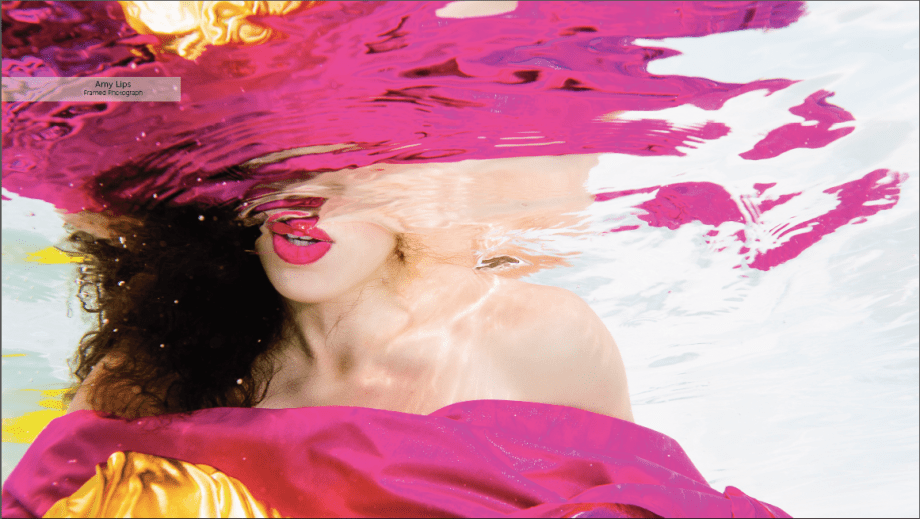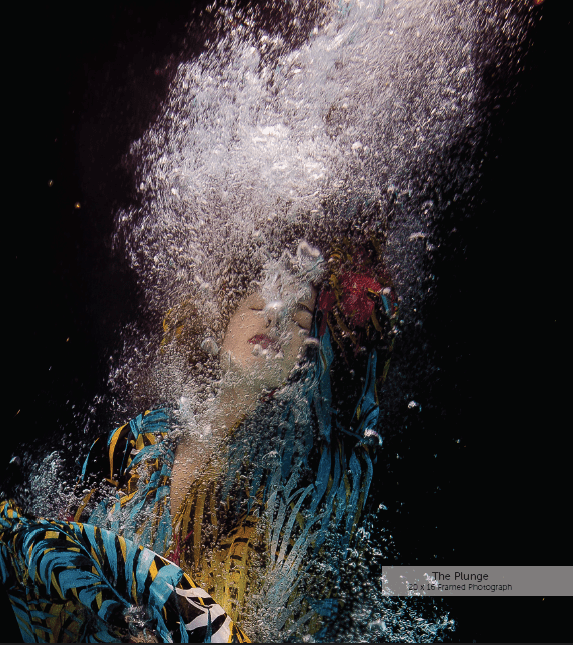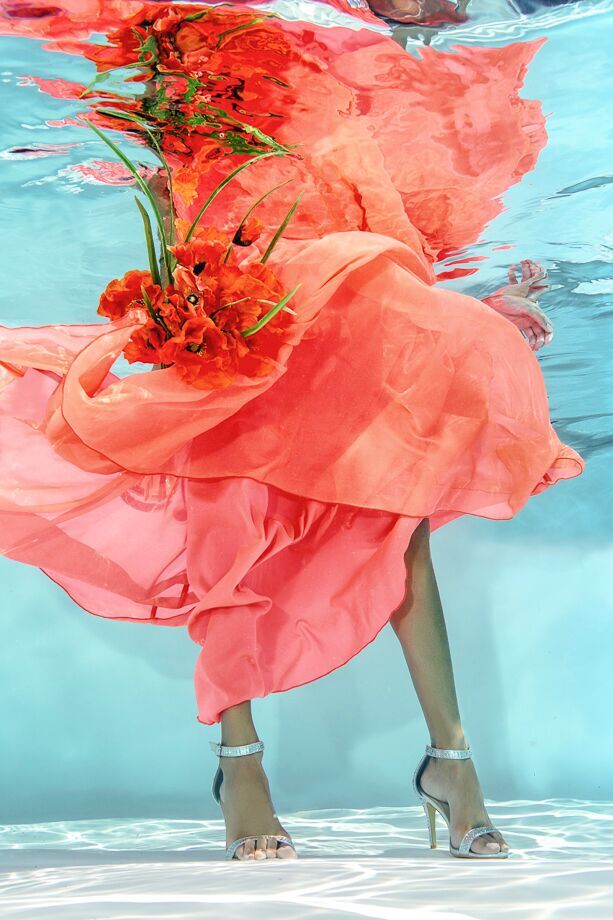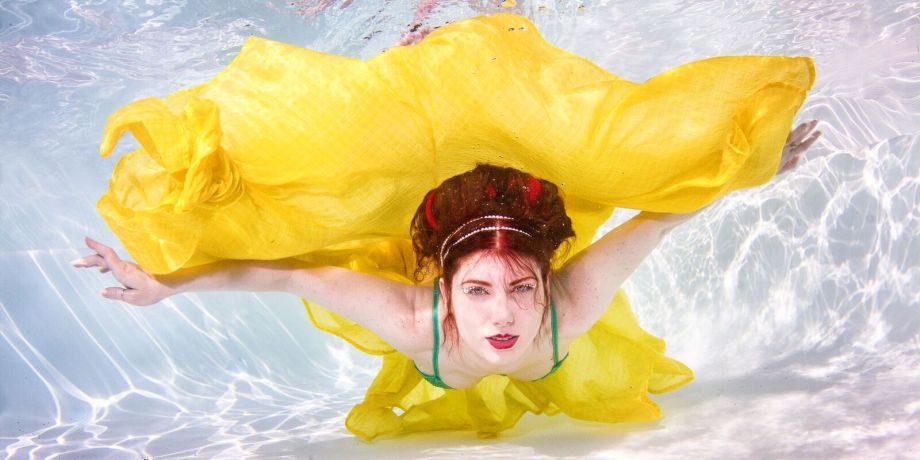Harry Martin is a two-time Emmy award-winning TV journalist who began his career as a news photographer. He continues to pursue his lifelong passion for photography with his newest project, “Harry Martin Underwater,” which incorporates photographs of female models immersed in water. “Harry Martin Underwater” is on exhibition through October 8 at the Piermont Flywheel Gallery in Piermont, New York. I spoke with Harry about how his photography career began, “Harry Martin Underwater,” and the models that he captures with his camera. As he photographs these women, his main goal is to “empower and not objectify them.”
Interview conducted by: Kathryn Cooperman
Edited by: Kathryn Cooperman and Morgan Moore
All images provided by Harry Martin.
What is your story? How did you fall in love with photography?
I was always a photographer ever since I can remember. I got my first matchbox-sized camera when I was 10 years old. I started out [my professional career] as a news photographer 45 years ago, when I shot movies and news stories on 16 mm film. I’ve won two Emmys for journalism. The neat part was working in the news business, where every day I worked with some of the best photographers in the world. Technique-wise, I learned a lot from them, and with this particular project [“Harry Martin Underwater”], I applied my own spin to photography.

What are some key differences and similarities between news photography and the type of photography you do now?
They are very different, because you can’t edit news. For my artwork, I can do touch-ups in post production, but in news photography, you are never able to do major edits, as it is unethical. However, news photography does prepare you to anticipate that “decisive moment” (a term coined by French photographer Henri Cartier-Bresson), which is actually the secret of great photography. You need to anticipate what is going on and how the water is going to affect hair and clothing. You have to anticipate the right moment to take the photograph, since no motor drive is used. I use the same camera underwater – a Nikon D4, with an underwater housing feature and underwater strobes. There are lots of things to anticipate and adjust for when shooting underwater.

What was it like moving from newscasting to photography?
In 1975, I stopped shooting news photography. That’s when I became an anchor and reporter to cover stories in front of the camera. I was putting in 14-hour days doing reporting, so I wasn’t able to professionally pursue photography. During that time, I was doing photography as a hobby, specifically travel photography.

When you pursued travel photography, which locations did you visit?
African safaris, Kenya, Thailand, Amsterdam, and Macchu Picchu. I also did the Ansel Adams tour with my son, in which we traveled through Yosemite National Park and tried to replicate Ansel Adams’ famous shots.
How did “Harry Martin Underwater” get started? What was your inspiration for the project, and what was your creative process like?
I have always wanted to do underwater photography. I’m a certified scuba diver in many different areas including underwater diving and videography – it is great to photograph fish, coral, and natural beauty. I started shooting photographs of my family while we were out on scuba excursions. I noticed that there were wonderful images, and thought, how cool would it be to replicate this under a more controlled condition or in a studio environment? I have a pool, so I tried photographing the models underwater. One of my first models always wanted to be a mermaid, and could hold her breath for 3 minutes [the model is depicted in the photo below]. From that [initial photo-shoot], I posted on social media, one thing led to another, and more models started contacting me.

Tell me about the women you photographed for “Harry Martin Underwater.”
Some model full time, and some part time. They all have interesting backstories: one woman is an Emergency Medical Technician, one is an Emergency Room nurse and a nuclear chemist, another is a community center founder in Costa Rica and works with the United Nations to make sure that developing countries have clean drinking water. They are fascinating women and I want to make sure I capture all of that. They bring the creativity. It is truly a collaborative process. Everyone has a lot of input into the styling, wardrobe, and everything of what we end up doing.

What is it like shooting underwater? What are some benefits and limitations of that environment?
It takes three times as long, and is twice as hard as shooting on land. You have to be sensitive and appreciative of the models, because shooting underwater is difficult. You have to make sure their eyes don’t hurt, because they have to open them underwater, and that they don’t run out of air. You also have to be sensitive to their comfort level, because posing underwater can be tiring. But the beauty of it is that it creates incredibly unexpected artistic surprises that are jaw-dropping.

What advice would you give to someone starting out in the photography field who wants to pursue it professionally?
Be persistent, be professional, and shoot as much as you possibly can. Don’t be afraid to push the envelope. Don’t get hung up on what kind of camera you have. It’s important but it doesn’t matter what kind of camera, year, or flash you have. It’s a tool that’s appropriate for what you’re trying to communicate. In the end, the photograph is all about the story, very similar to news reporting. It’s all about the story, and you have to tell a story or suggest a story. Art is about communicating some sort of story, or else it doesn’t work.

And what kind of story did you want to tell through “Harry Martin Underwater?”
Every picture is different – some are graphically oriented, some are dreamy, and others are evocative of different kinds of motions. I try to tell different kinds of stories; there is no one common thread that runs through each photograph. It is more about empowerment than anything else. That’s what I’m attempting to do [with “Harry Martin Underwater”]. I try to empower the women and not objectify them [see above photograph]. This is one thing I want to drive home. [When portraying women], you don’t have to pick brains or beauty. It’s not an either/or situation.


😍😍😍 amazing paintings…
LikeLike
[…] whether it be reviewing museum exhibitions, reflecting on different movements in art history, or conducting interviews with artists, I realize that I have never discussed my own art. It’s been a complicated relationship – […]
LikeLike